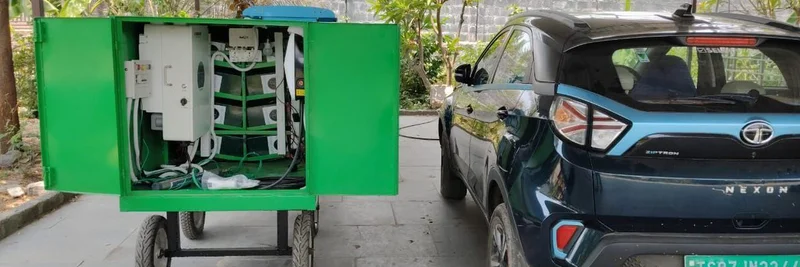If you've been following the crypto space, especially on Solana where things move at lightning speed, you might have caught wind of Evora's recent thread that's buzzing with potential. As someone who's seen the evolution from Bitcoin's early days to today's DePIN projects, I can tell you this one stands out. Evora is positioning itself as the "Uber for EV charging," but with a blockchain twist that could inspire the next wave of meme tokens tied to real-world utility. Let's dive into what their announcement means for the ecosystem.
Evora kicked off their journey just six months ago, right after the DePIN Summit 2025. For those new to the term, DePIN stands for Decentralized Physical Infrastructure Network—basically, it's about using blockchain to decentralize real-world hardware like charging stations, making them owned
- The site Meme Insider focuses on meme tokens, but the thread is about Evora, a DePIN project on Solana.
and operated by the community rather than big corporations. Evora's vision? Shift away from centralized power grids to networks built by everyday users.
At the heart of this is their mobile EV charger prototype, which they've built, tested, and prepped for the field. It's got dynamic output ranging from 8A to 32A, swappable lithium iron phosphate (LFP) battery packs for easy maintenance, and it's fully autonomous with app-linked controls. Plus, it's on wheels—completely mobile, so you can wheel it where it's needed most. This isn't just tech for tech's sake; it's solving real problems in EV adoption, like charging accessibility in urban areas.
To power this sustainably, Evora has teamed up with GreenKWh, integrating solar-powered battery infrastructure. This means clean energy from start to finish, with features for carbon tracking and scalability. In a world pushing for green tech, this partnership adds a layer of verifiability that's perfect for blockchain enthusiasts.
Now, here's where it gets crypto-native: Evora is launching an ICO through MetaDAOProject, incorporating futarchy-based governance. If you're scratching your head, futarchy is a system where prediction markets—essentially bets on future outcomes—guide decisions instead of traditional voting. It's innovative and ties directly into making energy co-owned, with rewards for early contributors. Imagine if Uber had tokenized shares for its first drivers; that's the vibe here. This could spark meme token communities around DePIN themes, where hype meets hardware.
Looking ahead, Evora plans to deploy over five mobile chargers across Bangalore in the next six months. They'll integrate on-chain tracking for real-world assets (RWAs)—think tokenized ownership of these chargers that generate verifiable revenue. Partnerships with local fleets will boost utilization, turning each unit into a yield machine for owners while expanding access for drivers.
What makes this exciting for the meme token crowd? Solana's low fees and fast transactions make it ideal for micro-rewards and community-driven projects. Evora's model could inspire memes that parody centralized energy giants, blending humor with real utility. As revenues flow back to token holders, it bridges the gap between viral tokens and tangible impact.
Evora's mission is clear: make EV infrastructure mobile, community-owned, and profitable. Starting in Bangalore, they're eyeing global expansion. If you're into DePIN or just love seeing crypto solve real-world issues, keep an eye on their X account for ICO updates. The DePIN energy revolution is charging up—don't miss the spark.
For more insights on how projects like this intersect with meme tokens and blockchain trends, stick around on Meme Insider. We've got the pulse on what's next in crypto.


